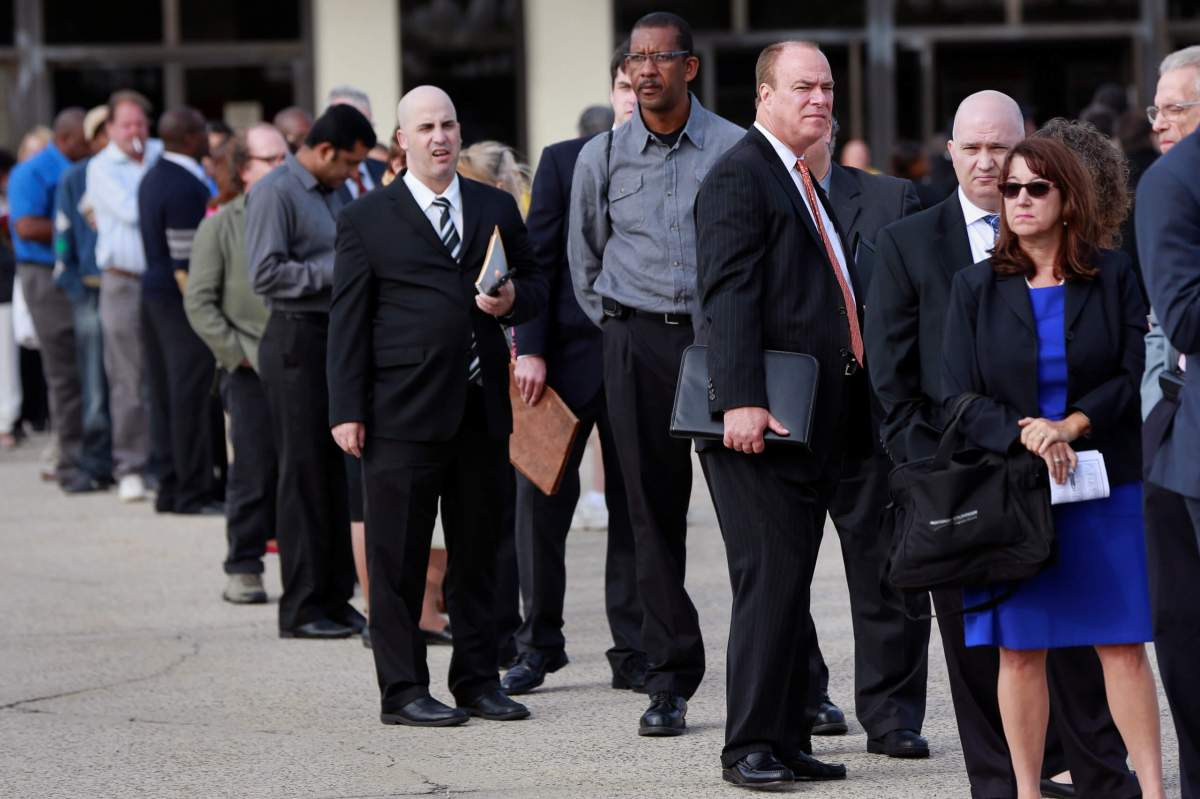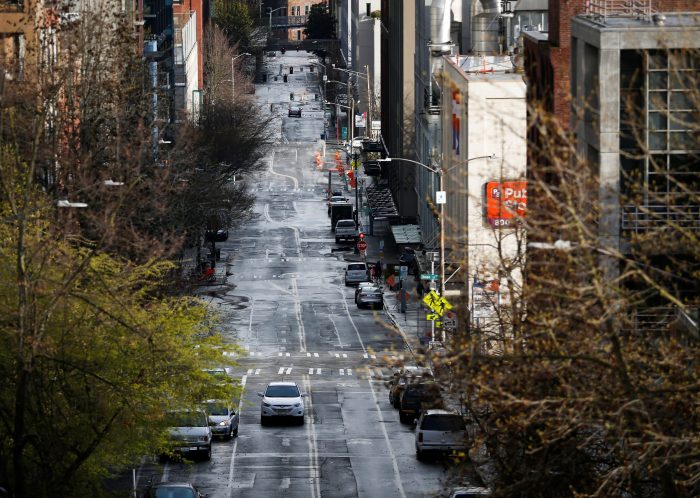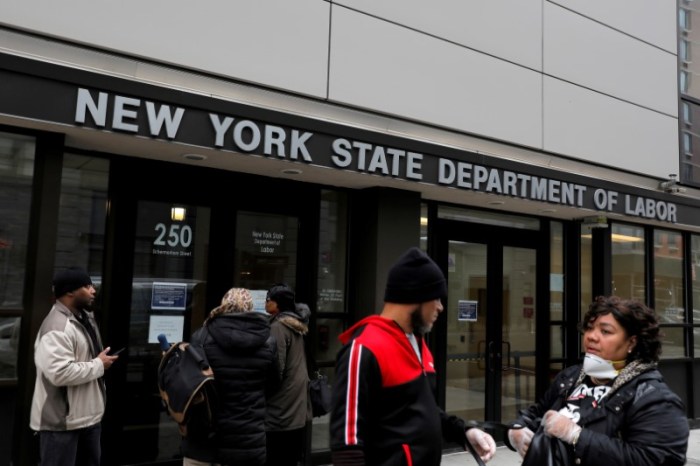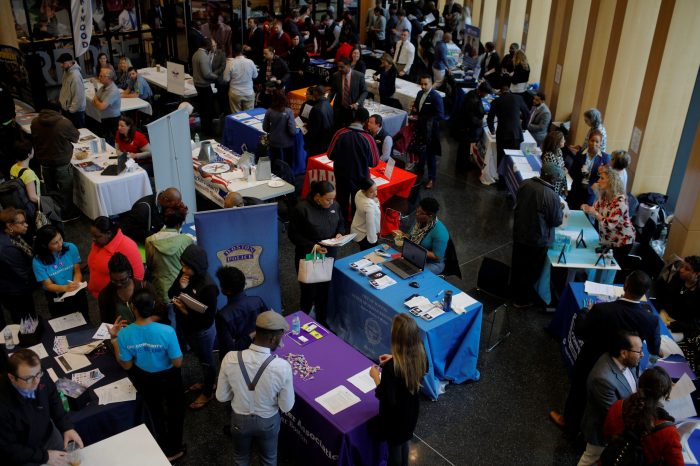By Lucia Mutikani, Reuters
The number of Americans filing new claims for unemployment benefits fell to a seven-month low last week, but the pace of decline has slowed and further improvement could be limited by a raging COVID-19 pandemic and lack of additional fiscal stimulus.
Other data on Thursday showed consumer prices were unchanged in October as moderate gains in the cost of food were offset by cheaper gasoline amid slack in the economy. The frail economy is one of the major challenges President-elect Joe Biden faces when he takes over from President Donald Trump in January.
Initial claims for state unemployment benefits fell by 48,000 to a seasonally adjusted 709,000 for the week ended Nov. 7. Data for the prior week was revised to show 6,000 more applications received than previously reported.
Economists polled by Reuters had forecast 735,000 applications in the latest week.
Despite claims dropping to their lowest since March, they remained above their peak of 665,000 during the 2007-2009 Great Recession. Weak demand, especially in the services sector, is forcing employers to shed workers. Layoffs could accelerate as new coronavirus cases explode across the country.
Daily new COVID-19 infections are exceeding 100,000 and hospitalizations are surging as cooler weather draws people indoors, prompting some state and local governments to impose new restrictions on businesses. Even without restrictions, many consumers are likely to stay away from places like bars, restaurants and gyms, fearing exposure to the illness. Restaurants and gyms moved outdoors during summer.
Unadjusted claims fell 20,799 to 723,105 last week. Economists prefer the unadjusted number given earlier difficulties adjusting the claims data for seasonal fluctuations because of the economic shock caused by the pandemic. Including a government-funded program for the self-employed, gig workers and others who do not qualify for the regular state unemployment programs, at least 1 million people filed claims last week.
Major U.S. stock indexes opened mixed as investors kept a wary eye on the coronavirus infections. The dollar slipped against a basket of currencies. U.S. Treasury prices rose.
MILLIONS UNEMPLOYED
Unemployment claims peaked at a record 6.867 million in March. Much of the improvement in the labor market came from businesses recalling laid-off and furloughed workers as companies and the unemployed accessed their share of more than $3 trillion in government coronavirus relief.
But fiscal stimulus has run out, which will make it harder for the economy to generate enough jobs to absorb the millions of unemployed Americans. The number of people receiving benefits after an initial week of aid declined 436,000 to 6.786 million in the week ending Oct. 31. That partly reflected many people exhausting their six months of state benefits.
A total of 4.143 million people filed for extended unemployment benefits in the week ending Oct. 24, up 159,776 from the prior week. About 21.2 million people were receiving jobless benefits in late October.
The government reported last week that nonfarm payrolls rose by 638,000 jobs in October, the smallest gain since the jobs recovery started in May. That followed 672,000 jobs added in September. Only 12.1 million of the 22.2 million jobs lost in March and April have been recovered.
In another report on Thursday, the Labor Department said its consumer price index was unchanged last month following a 0.2% increase in September. A 0.2% rebound in food prices was offset by a 0.5% drop in the cost of gasoline.
In the 12 months through October, the CPI climbed 1.2% after increasing 1.4% in September. Benign inflation could allow the Federal Reserve to keep its ultra-easy monetary policy for a long time to aid the recovery from the COVID-19 recession.
Economists polled by Reuters had forecast the CPI would nudge up 0.1% in October and advance 1.3% on a year-on-year basis.
Excluding the volatile food and energy components, the CPI was also flat in October after rising 0.2% in the prior month. Owners’ equivalent rent of primary residence, which is what a homeowner would pay to rent or receive from renting a home, rose 0.2% after ticking up 0.1% in September. That offset a 0.4% decline in the cost of healthcare.
The so-called core CPI increased 1.6% on a year-on-year basis after gaining 1.7% in September.
The Fed’s preferred inflation measure, the core personal consumption expenditures (PCE) price index rose 1.5% in the 12 months through September. The central bank has a 2% target, a flexible average. October’s core PCE price index data is scheduled to be released at the end of this month.


































